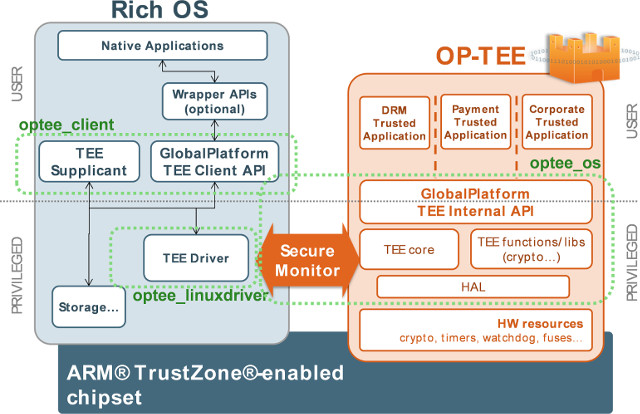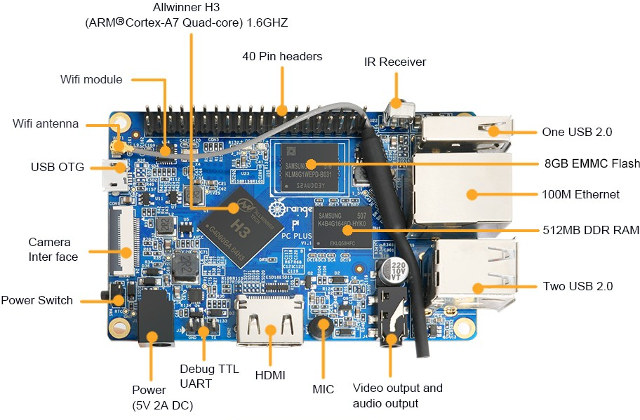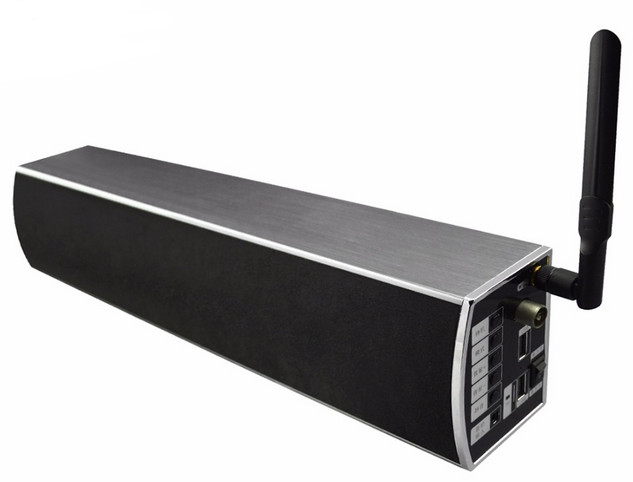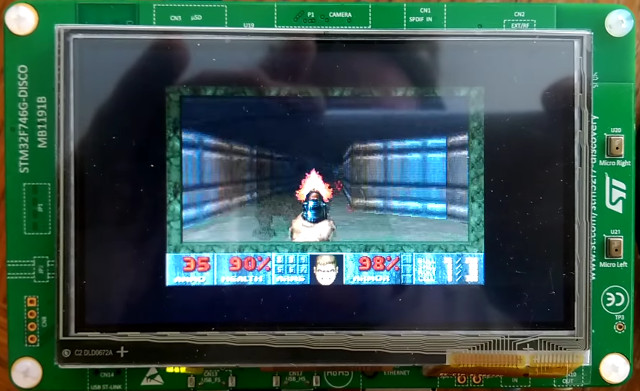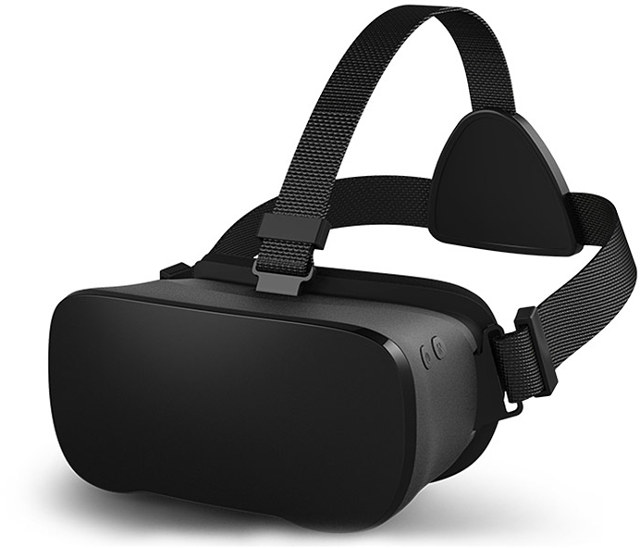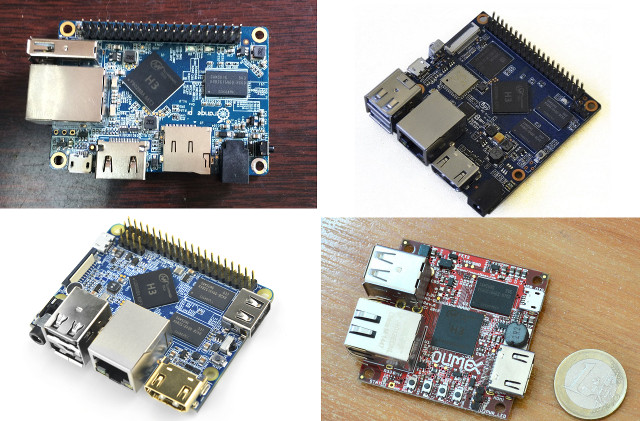Project Tango uses computer vision to enable mobile devices to detect their position relative to the world using 3D maps of the world created in real-time using 3D depth cameras. Google and Lenovo had already announced a Tango phone would be launched later this year during CES 2016, and the companies have now officially introduced Lenovo Phab 2 Pro, the world’s first Tango-enabled smartphone, scheduled to start selling worldwide in September for $499 and up. Lenovo Phab Pro 2 specifications: SoC – Qualcomm Snapdragon 652 Tango Edition processor with 4x ARM Cortex A72 cores @ up to 1.8 GHz, 4x ARM Cortex A53 cores, and Adreno 510 GPU System Memory – 4GB RAM Storage – 64GB flash Display – 6.4″ display with 2560×1440 (QHD) resolution Audio – Dolby Atmos / 5.1 audio capture via 3 microphones with 360 voice noise-cancelling (Note: How can you record 5.1 audio with only 3 […]
Bluetooth 5 Promises Four times the Range, Twice the Speed of Bluetooth 4.0 LE Transmissions
The Bluetooth SIG is about to officially unveil Bluetooth 5 on June 16 during a media event in London. One change on the marketing side is that they dropped the point number, so it won’t be called Bluetooth 5.0 like in Bluetooth 4.0, but just Bluetooth 5. The decision has been made allegedly to “simplifying marketing, and communicating user benefits more effectively”. On the technical side, Bluetooth 5 will double the speed and quadruple the range of low energy Bluetooth transmissions compared to Bluetooth 4.x, which could be important for IoT applications where nodes are connected throughout the house. Bluetooth 5 will also allow connectionless services to add location-relevant information and navigation. The specifications have not been publicly released yet, and made they will be on June 16. Eventually, you’ll be able to download them on Bluetooth “adopted specifications” page. Via XDA developers
Raspberry Pi 3 To Get ARM TrustZone Support with Linaro OP-TEE Port
If you ever wanted to experiment with ARM Trustzone, and IoT security, you’ll soon be able to do so with the Raspberry Pi 3 board thanks to a port of Linaro OP-TEE (Open Portable Trusted Environment Execution) by Sequitur Labs. Broadcom BCM2737 SoC found in Raspberry Pi 3 board already had TrustZone hardware for isolation and protection for sensitive material such as cryptographic keys, algorithms and data, but the upcoming software release will mean the feature can now be used, and it’s free for trial/evaluation, and education. Trustzone is also used for DRM (digital rights management), but in the case of Raspberry Pi 3 it will most likely used to teach how to secure the Internet of Things (IoT). The release is scheduled for July 11, with source code and documentation to be available in OP-TEE github account. All you’ll need to get started is a Raspberry Pi 3 board, […]
Orange Pi PC Plus Quad Core Development Board with 1GB RAM, 8GB eMMC flash Sells for $20
Most low cost development boards do not include internal storage in order to decrease costs, and instead require their users to flash their preferred operating system on (micro) SD card. This makes it easy to get started, but many micro SD cards often suffer from poor random I/O performance, even for Class 10 or greater card, leading to a poor user experience compared to what you’d get with an eMMC flash. Shenzhen Xunlong has released yet another Allwinner H3 board, namely Orange Pi PC Plus, similar to Orange Pi PC but adding WiFi, and 8GB eMMC flash. Orange Pi PC Plus specifications with main change with Orange Pi PC highlighted in bold: SoC – Allwinner H3 quad core Cortex A7 @ 1.3 GHz with ARM Mali-400MP2 GPU up to 600 MHz System Memory – 1GB DDR3 Storage – 8GB eMMC flash + micro SD card slot Video Output – HDMI […]
KS2 Android SoundBar Features Amlogic S905 Processor, a DVB-T2 Tuner
I’ve tested several Android TV boxes with digital TV tuners this year, including K1 Plus S2 T2 and U4 Quad Hybrid, but the manufacturers of K1 Plus have decided to design an Android 5.1 soundbar powered by Amlogic S905 processor and including a DVB-T2 tuner to catch live TV channels. KS2 specifications: SoC – Amlogic S905 quad core ARM Cortex-A53 @ up to 2.0GHz with penta-core Mali-450MP GPU @ 750 MHz System Memory – 1GB DDR3 Storage – 8GB flash + micro SD card slot up to 32GB Video Output – HDMI 2.0 up to 4K @ 60Hz; composite video output (RCA) Audio HDMI, Line IN, digital audio input Speakers 2x 15W 2.5″ speakers 1x 20W 3″ subwoofer 1x bass diagram Audio Range – 20 to 20 kHz Signal to noise ratio – >= 85 dB Effective output power: 50 watts Video Codecs – 10-bit H.265 up to 4K60, MPEG/VC-1/AVS+/H.265 […]
Frosted OS is an Open Source POSIX Operating System for Cortex-M Micro-controllers
Frosted, which stands for “Free Operating Systems for Tiny Embedded Devices”, is an OS with a POSIX-compliant system call API, borrowing the Linux kernel kconfig for configuration, and currently supporting ARM Cortex M0,M3,M4, and M7 MCU including Texas Instruments Stellaris LM3S, STMicro STM32F4/F7, and NXP LPC17XX micro-controllers. The developers are focusing on IoT applications, as well as porting retro-games such as Doom. The kernel relies on libopencm3 for hardware abstraction, and the operating system can be built with GCC ARM for Frosted using the source code released under a GNU GPLv2 license. The Wiki explains how to build and run the OS on either Qemu (in a Linux computer) used LM3S target, or an STM32F4 Cortex -M4 or STM32F7 Cortex-M7 board. The team also uploaded showing a video of Doom (fdoom) running on STM32F7 board, and possibly adapted from stm32doom port. If you are interested in joining the project you can […]
CX-V3 Android VR Headset based on Allwinner H8vr Platform Sells for $130
We’ve already seen that Allwinner intended to enter the virtual reality market with their H8vr, V9 and V10 All-in-One Android VR solutions, and at least one H8vr headset is now available for sale with CX-V3 VR headset with a full HD display, also called V3 that selling for $129.99 on GeekBuying, or as low as $99.99 if you are lucky enough to win a coupon. CX-V3 All-in-One VR headset specifications: SoC – Allwinner H8 octa core Cortex A7 processor @ 2.0 GHz with PowerVR SGX544 GPU @ 700 MHz System Memory – 2GB DDR3 Storage – 16GB eMMC flash + micro SD slot Display – 5.5″ 1920×1080 resolution Lenses 2x optical lenses that work for people with myopia under 64 mm Diameter – 43mm 100 degrees field of view (FOV) 46mm IPD (interpupillary distance) adjustment Connectivity – 802.11 b/g/n WiFi and Bluetooth 4.0 (Ampak AP6212) Audio Output – 3.5 mm […]
Allwinner H3 Boards Comparison Tables with Orange Pi, Banana Pi M2+, NanoPi P1, and H3-OlinuXino-NANO Boards
Allwinner H3 SoC has now found its way into many low cost development boards, including several Orange Pi Boards, Banana Pi M2+, NanoPi M1, and Olimex H3-OlinuXino-NANO, and it might be difficult to choose among the list of boards available, so tkaiser has written a buyer’s guide for boards supported by Armbian, with some of the key differentiating factors, and on my side, I thought it might be a good idea to draw a comparison table between the boards. Since a table with 10 boards would be hard to read, I made two tables: one with boards with 512 MB RAM + Orange Pi PC / PC Plus, and a second table with higher end boards with 1 to 2 GB RAM, and more features. But first let’s talk about Allwinner H3 SoC since it’s common to all boards. It’s a quad core Cortex A7 processor clocked at up to […]





